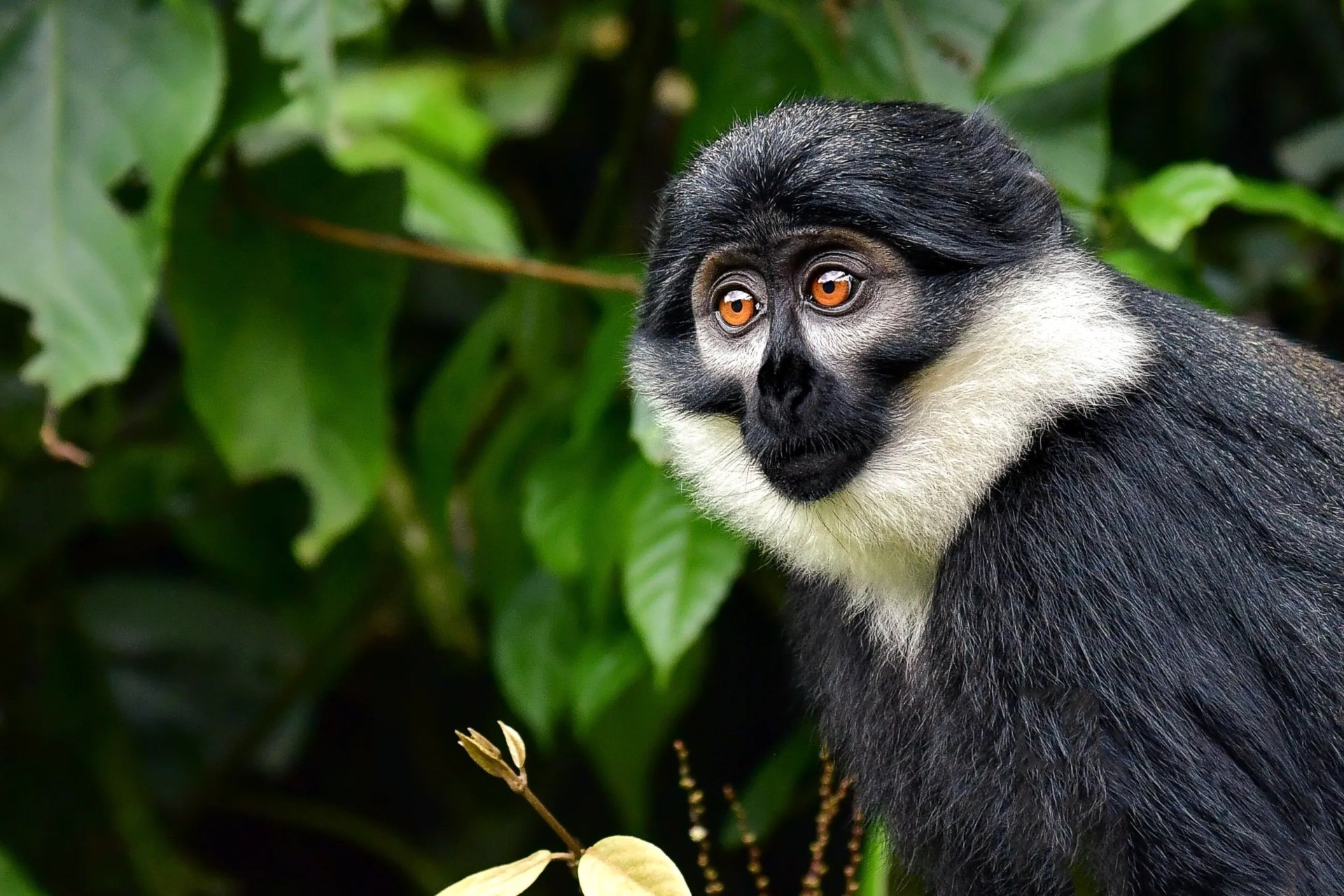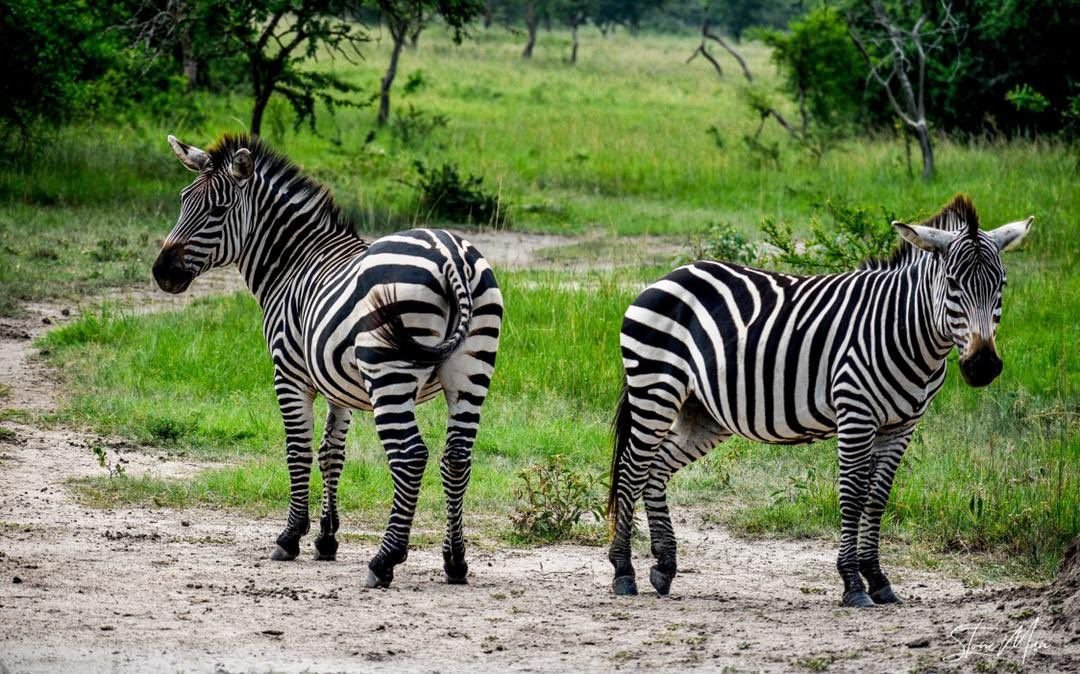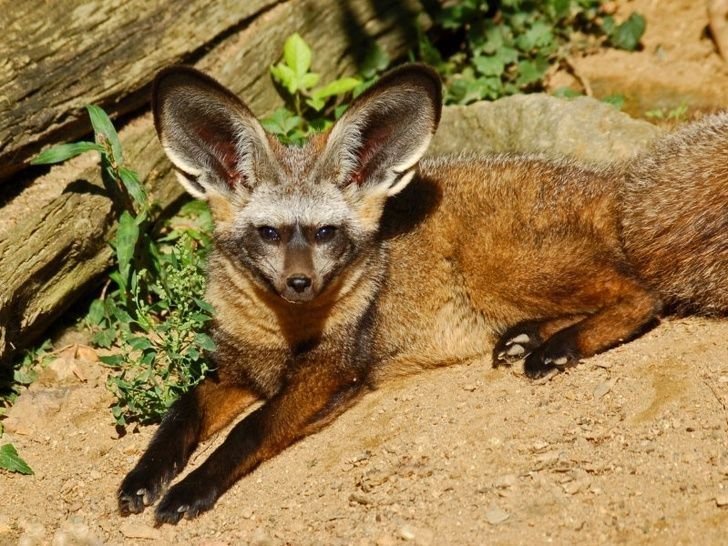L'Hoest's Monkey
Semi-terrestrial L'Hoest's monkeys only live in lowland, submontane, and montane forests along the Albertine Rift in eastern DRC and western Burundi, Rwanda, and Uganda.

The L'Hoest's monkey can be found in western Uganda, Rwanda, Burundi, and the northeastern Democratic Republic of the Congo. It is a forest monkey, which can be found in primary forests that are damp and tall.
They primarily inhabit tiny, female-dominated populations in mountainous, forested environments. They have a black coat, and their distinctive white beard helps to identify them.
The short, dark brown coat of Cecopithecus lhoesti features a dark belly and a chestnut-colored back. It has a light grey moustache and light grey cheeks. It has a distinctive white bib that is quite noticeable.
L'Hoest's Monkey Behaviour
The Cecopithecus lhoesti species only has one male and lives in rather small, female-dominated communities. The male typically only stays for a few weeks or at most a few years, whereas the females are typically related. The mature male will call in a clear, booming voice. They are active all day long, although they are most active in the morning and late in the day. They typically grip branches or one another while they sleep in trees while seated. When they feel threatened or realise they are being watched, they will run and hide in trees before becoming very still. They usually inhabit land.
L'Hoest's Monkey Reproduction
The date of L'Hoest's monkey breeding varies by location and season. One youngster will be born after around a five-month gestation period. Wherever she is at the time, the mother normally gives birth at night. Most babies are born at the end of the dry season, so their mothers can nurse them during the rainiest part of the year. While the baby is still attached to her belly, she will devour the placenta and suck it clean. The group's other females will be very interested in the baby and try to hold it. After a few months, nursing stops being as frequent, but it will resume when another baby is born and last for about two years. When they achieve sexual maturity, male progeny will disperse from the group.
L'Hoest's Monkey Diet
Out in nature as an herbivore, L'Hoest's monkey prefers to eat fruit, mushrooms, herbs, roots, and leaves. But on rare occasions, it will also consume eggs, reptiles, and tiny birds.
Where in Uganda can I observe L'Hoest's monkey?
Because it lives on land and likes deep secondary forests, this beautiful guenon is less well-known and harder to find than most of Uganda's other primates.
L'Hoest's monkeys are often seen in Uganda's Kibale Forest, Bwindi Impenetrable, and Maramagambo Forest, which is in Queen Elizabeth National Park.
What's Your Reaction?
 Like
0
Like
0
 Dislike
0
Dislike
0
 Love
0
Love
0
 Funny
0
Funny
0
 Angry
0
Angry
0
 Sad
0
Sad
0
 Wow
0
Wow
0













































































